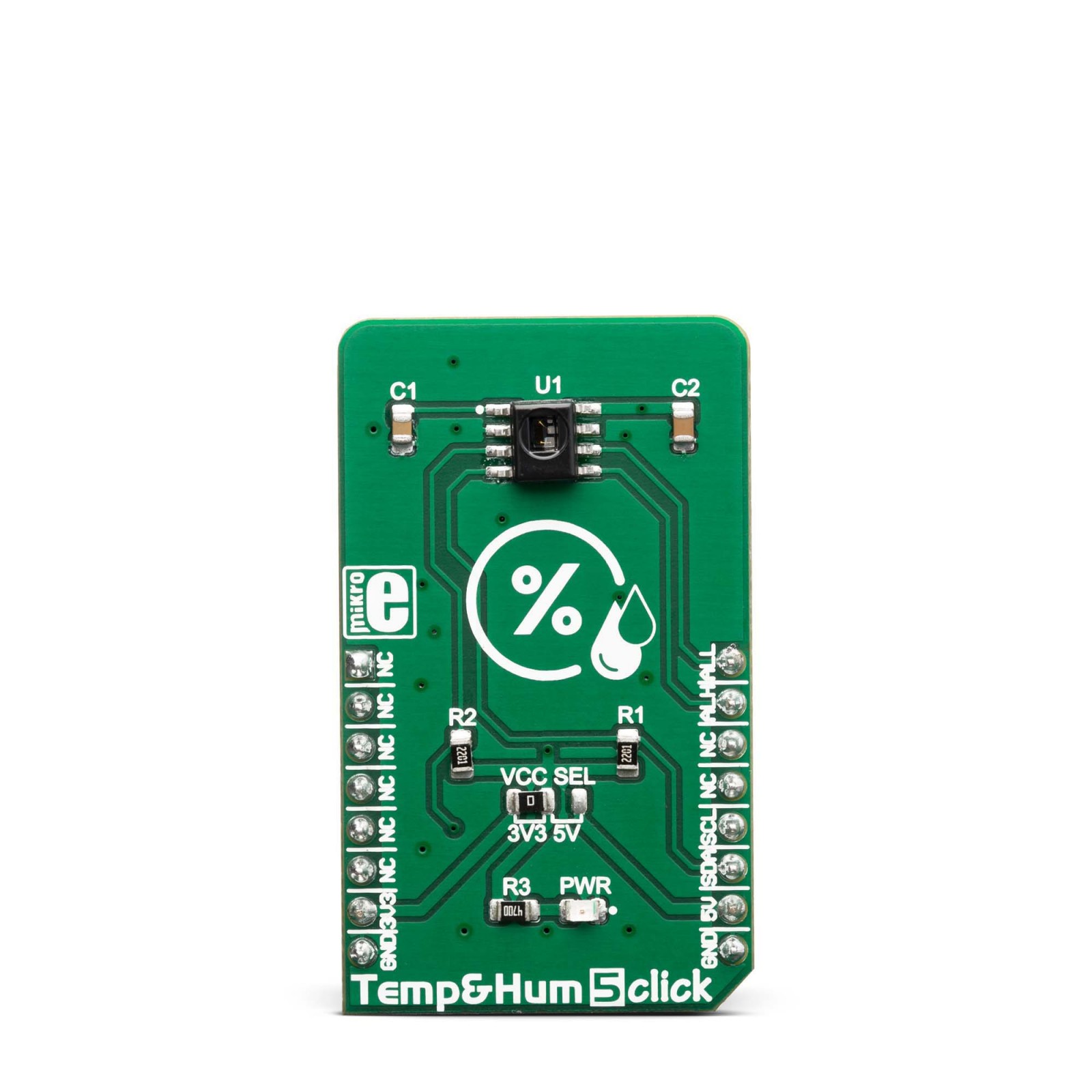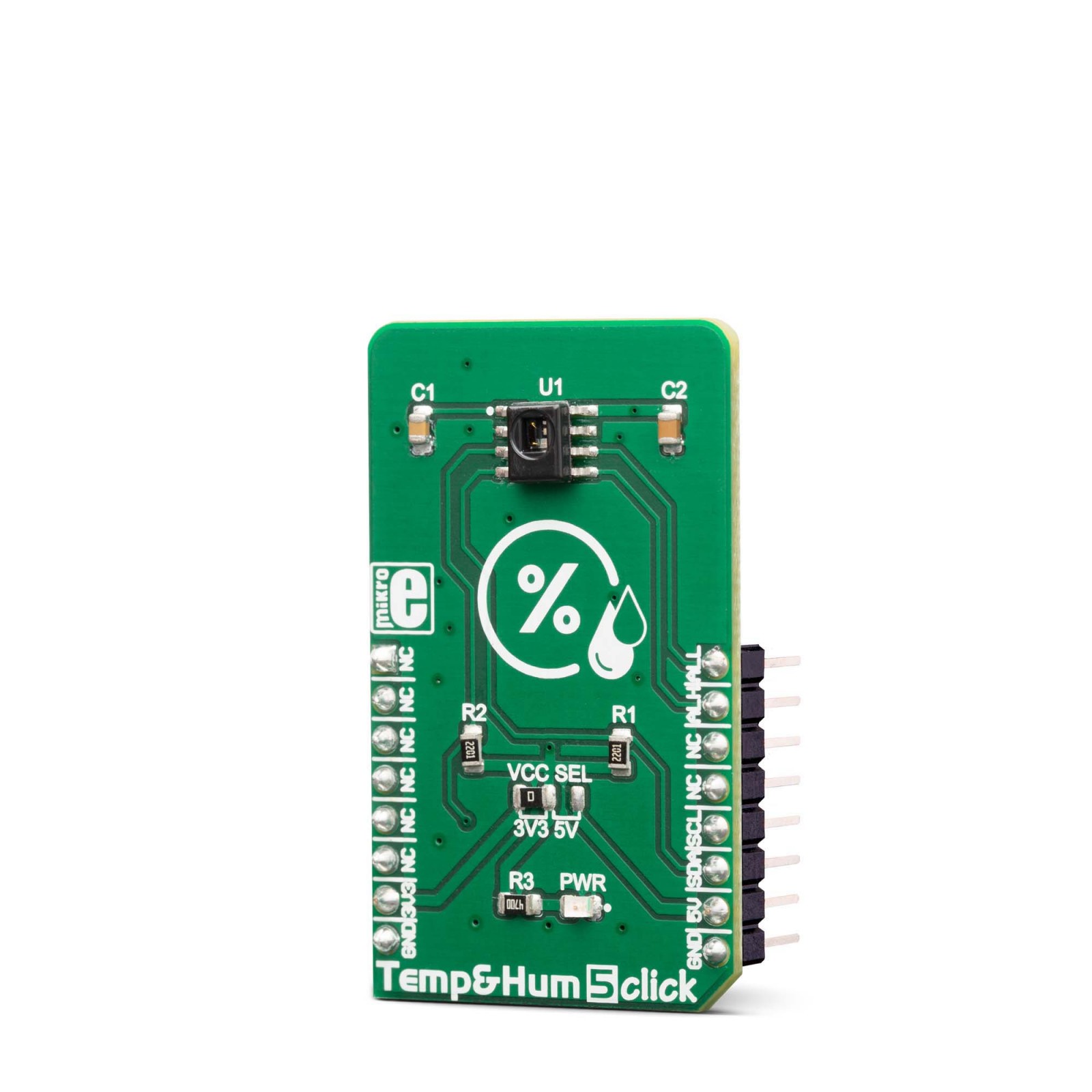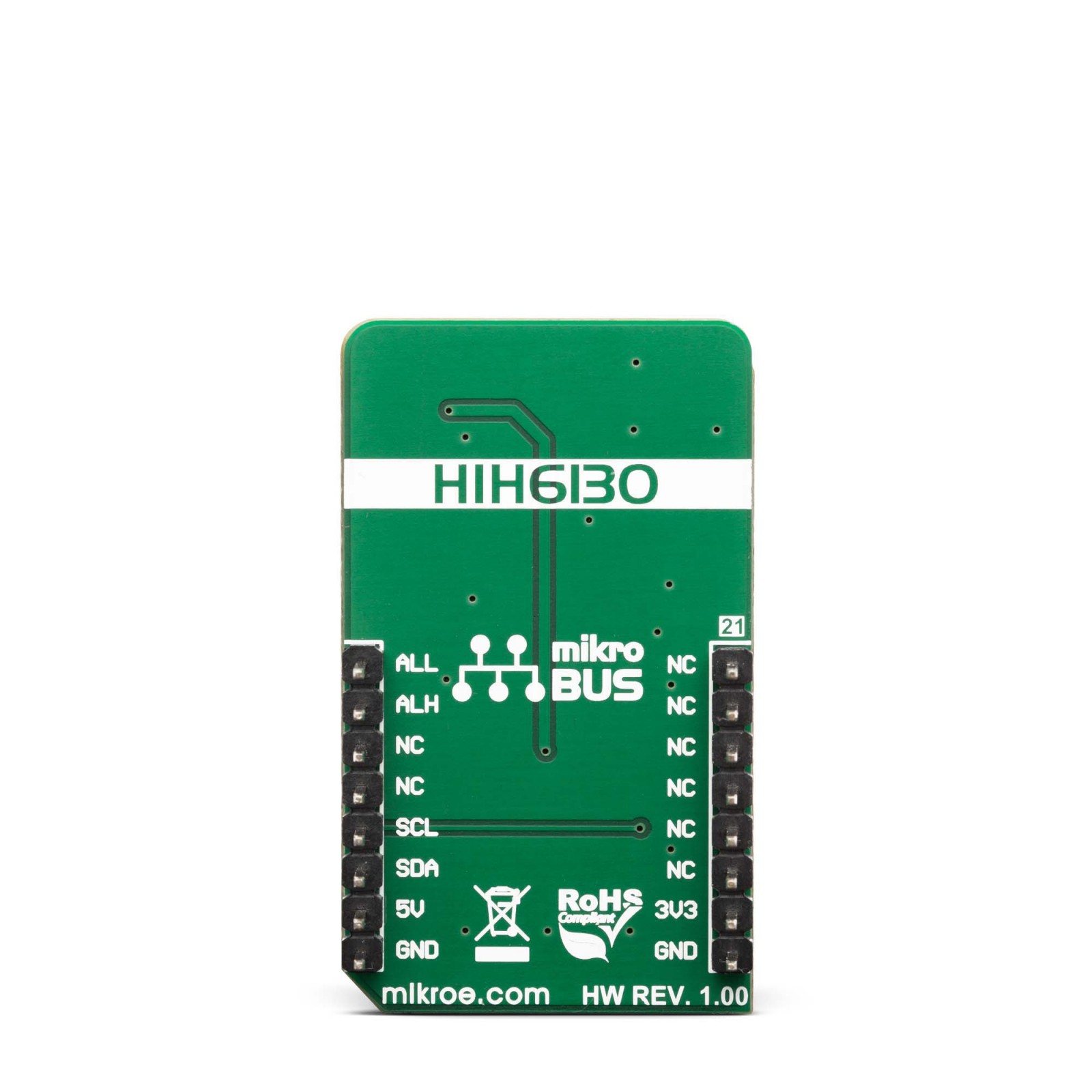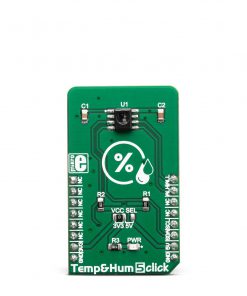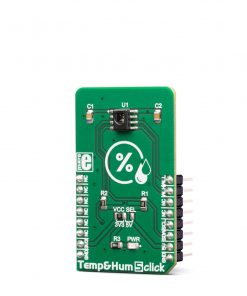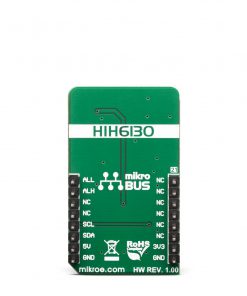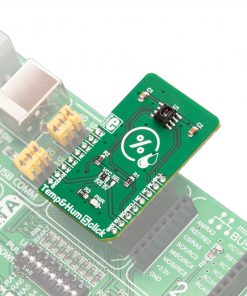Temp&Hum 5 click is a temperature and humidity sensing click board™, packed with features that allow simple integration into any design. It can measure a wide range of temperature and relative humidity values with high accuracy. The Click board™ is equipped with the HIH6130 sensor, offering the complete measurement system onboard: capacitive humidity sensor, bandgap thermal sensor, signal processing, and the I2C communication interface. Featuring good reliability over time, high accuracy, and low hysteresis, it represents an ideal solution to be used in various temperature and humidity related applications.
Temp&Hum 5 click is supported by a mikroSDK compliant library, which includes functions that simplify software development. This Click board™ comes as a fully tested product, ready to be used on a system equipped with the mikroBUS™ socket.
 RN4678 Click
1 × R850.00
RN4678 Click
1 × R850.00  GSM-GPS Click
1 × R1,300.00
GSM-GPS Click
1 × R1,300.00  Alcohol Click
1 × R330.00
Alcohol Click
1 × R330.00  RTC 2 Click
1 × R460.00
RTC 2 Click
1 × R460.00 
